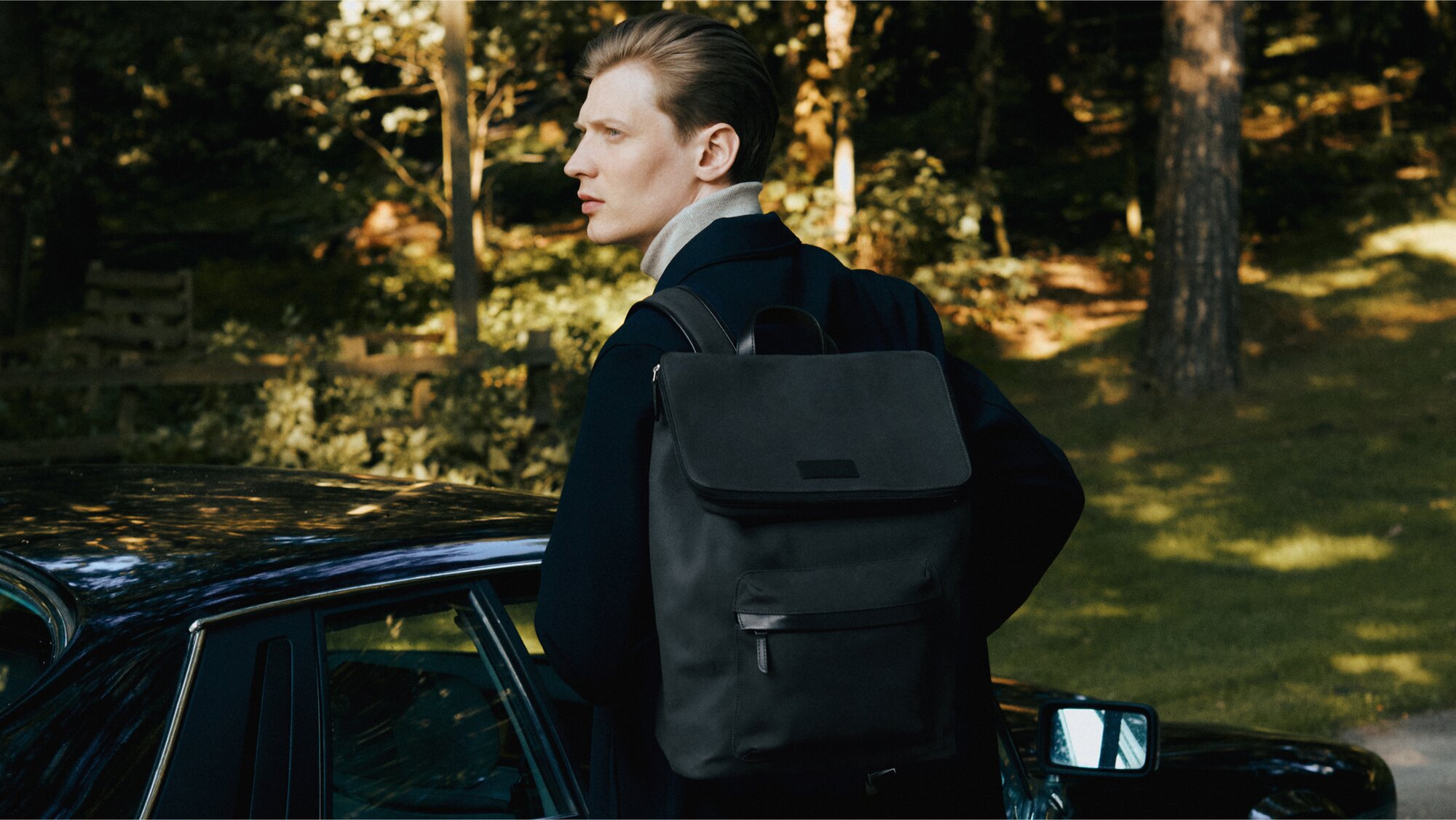Nubuck might be less well-known than other types of leather, but unique physical characteristics make it a natural choice for designing elegant bags and accessories.
It’s a big plus that nubuck leather care is, well, pretty straightforward. Certainly a lot easier than doting on your latest exotic plant. We'll dive into the specifics of cleaning and caring for nubuck below.
Contents
Why is nubuck leather care important?
How to care for nubuck leather
How to clean nubuck
Move collection

Compact Weekender
Why is nubuck leather care important?
We should start by stating that nubuck is an extremely long-lasting leather. Durability stems from the fact that it’s made by sanding down the toughest cross-section of an animal’s hide: the outer layer (or, in scientific terms, the full-grain layer).
While nubuck’s hardiness is impossible to dispute, a few susceptibilities do remain. For example, the act of sanding down full-grain leather to produce nubuck gives the material a high degree of permeability. This is both a pro and a con. Breathability is a big plus when it comes to clothing and footwear accessories. However, this porousness also makes nubuck slightly more prone to oil and grease stains.
Sanding is what creates the fine fibres that constitute nubuck’s velvety surface, often referred to as the ‘nap’. However, the fineness of the nap does mean surface scratches can appear after sustained use.
Lastly, the signature softness of the nap can gradually wane over time without semi-consistent care, becoming flat and shiny.
The good news is that caring for nubuck leather — and resolving the above issues — is fairly straightforward. Meaning there’s no reason why your favourite nubuck bag, loafers or boots can’t stay in pristine condition for a long time.

Compact Weekender
How to care for nubuck leather
Most nubuck leather care is achieved with a simple nubuck brush. These softly-bristled brushes are widely available and can be used to clean and ‘re-fluff’ nubuck.
To remove light scratches and keep the nap looking fresh and raised, simply apply the brush in a circular motion to the affected area(s). Gradually you’ll see the surface of your nubuck product — whether it’s a piece of furniture or bag — return to its original state. It’s worth doing this straightforward task fairly regularly to keep nubuck accessories in prime condition.
While nubuck has a fair degree of water resistance, you can make it less susceptible to the elements with the help of a waterproofing spray. It’s important the spray you use is nubuck-friendly, as the formula (and effectiveness) will vary depending on the leather. Treat 2-3 times yearly for extra protection in wet and cold months.
Similar to how moisturiser replenishes your skin, leather also requires conditioning agents to nourish fibres and retain flexibility. Nubuck conditioner sprays lubricate fibres, helping to rejuvenate the appearance of nubuck products. Again, we suggest applying 2-3 times per year. Remember to always spot-test on a concealed part of the product, as these conditioners can darken nubuck.

Compact Weekender
How to clean nubuck
Cleaning nubuck leather is a task you can comfortably do at home, with the exact process differing slightly depending on the extent of the stain.
A basic nubuck leather care kit includes a nubuck-specific brush, eraser and cleaner for the toughest stains.
- Blot surface. Begin by blotting the affected area with a damp microfibre or nubuck-specific cloth. This should help to remove surface dirt. Avoid using heat to dry the surface, leave it to air dry overnight
- Brush surface. Apply a soft-bristled nubuck brush to the surface in a circular motion to lift additional dirt from the nap. No more than a few seconds on each part of the nubuck
- If required, apply a nubuck cleaner or eraser. Tougher stains can require the application of nubuck cleaner. Follow the instructions closely and always patch-test on a concealed area before cleaning the rest of your product. Nubuck erasers are a final resort for deep, embedded stains. It’s important to apply them very gently, as they can alter the texture of the nubuck
- Revive surface. Leave the product for 24 hours. The next day, brush the nubuck in a soft, circular motion to revive the nap
Move collection
If you’re convinced by the redeeming qualities of nubuck and want to invest in a top-tier nubuck bag, look no further than the Move collection.
Move bags are designed to support modern travellers as they move across the globe. Made from premium chrome-free nubuck, these bags favour a pared-back aesthetic that draws attention to the materials — bringing a touch of finesse to daily pursuits.

Compact Weekender
Takeaway
Understanding how to take care of nubuck leather is vital to keeping your product in top condition over an extended period of time.
At the very least, regular brushing with a soft-bristled brush will ensure the surface retains its velvety, napped texture and cleanse it of surface dirt.
Interested in learning more? Check out our piece on nubuck leather or dive deeper into the differences between nubuck and suede.
The latest product news and travel guides? It's just a sign-up away.
